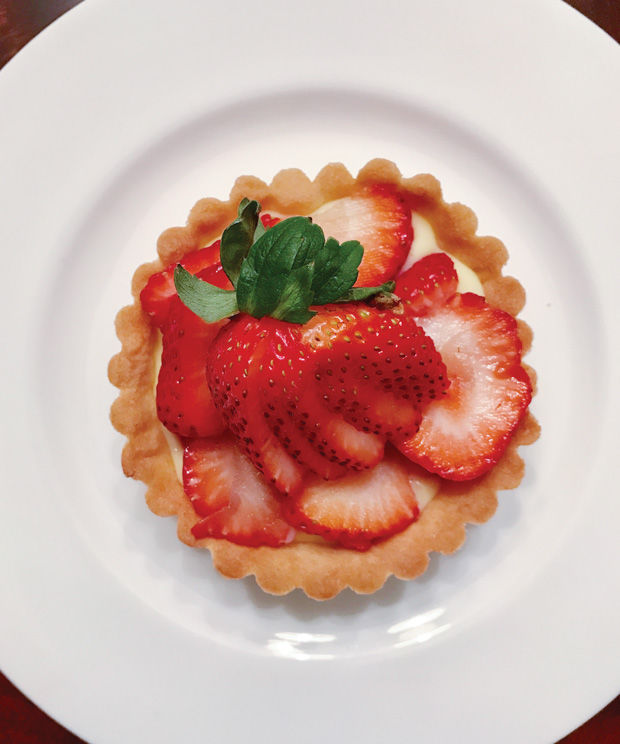Thanksgiving: When pies take the cake
Published November 16, 2017
When was the last time you had anything but pie for your Thanksgiving dessert? Ever heard of anyone making Thanksgiving cake or Thanksgiving muffins? Probably not. Nor are they your traditional Rosh Hashanah dessert.
Our Thanksgiving pies are a cultural phenomenon, “as American as apple pie.” Yes, apple pie. This menu item is so traditional for that holiday that upscale hotels around the world have begun luring American guests for Thanksgiving with the promise of turkey, cranberry sauce, and, yes, apple pie.
While we may think of pie—apple, pumpkin, and otherwise–as uniquely American, its origins date back to the ancient Greek custom of enclosing meats and vegetables in a pastry crust as a means of preserving them. The concept eventually spread throughout Europe. As Harold McGee writes in his “On Food and Cooking: The Science and Lore of the Kitchen” (Scribner, 2004):
“Pie was the near equivalent of the original pâté in medieval English, and meant a dish of any sort—meat, fish, vegetable, fruit—enclosed in pastry. The word had less to do with dough than odds and ends: it came from ‘magpie,’ a bird with variegated coloring that collects miscellaneous objects for its nest.”
Early British settlers brought these various pies to America, including the spiced squash pie, which soon morphed into a species of squash more common in America, namely, the pumpkin. Hence, the origins of pumpkin pie.
However, our Puritan founders never decreed that you could only serve pumpkin pie on Thanksgiving. Indeed, historians have found no evidence of any pie—pumpkin, pecan, apple, or otherwise—on the menu at that first Thanksgiving celebration in 1621. Pumpkin pie was not popularized in America until the early 1800s.
Pies have come a long way since then. Along with pumpkin pie, our nation’s Thanksgiving Day tables feature a remarkable variety of pies, including fruit pies, nut pies, cream pies, and even pies filled with rich caramel and chocolate ganache.
To find out more about America’s classic Thanksgiving dessert, I spoke with Carolyn Downs, pastry chef and owner of Sugarfire Pie, located in Olivette. The menu lists 11 different types of pies, with an assorted variety in the category of “Pies That Come and Go.”
“Our most popular sellers for Thanksgiving are pumpkin, pecan, and our special Sugar Fire Pie, with apple next in line,” Downs explained. “And for the lovers of less traditional pies, our Key Lime Pie is very popular.”
Downs offered the following tips to home bakers:
1. The best pie dough is an all-butter crust made with unbleached flour and unsalted butter.
2. Always add a little sea salt and sugar to your pie dough.
3. After making the dough, let it rest for 1 hour in the refrigerator before rolling it out.
4. After rolling out the dough and fitting it into your pie dish, place it in the freezer. Once frozen, you should add your filling to the frozen pie dough and immediately bake it.
5. If your have a convection oven, begin baking your pies at 350 degrees for 15 minutes, then reduce the temperature to 325 degrees. If you don’t have a convection oven, increase the oven temperatures by 5 degrees.
6. Fruit pies should be baked on the bottom oven rack, while all other pies should be baked on the center rack.
7. Most pies can be made ahead and frozen. The exceptions are apple pies and cream pies.
Now comes the hard part: how to decide what pie, or pies, to serve. Although pumpkin pie just happens to be my family’s favorite, we also like other types, with almost everyone opting for mini slices of more than one variety. With a pre-determined limit of three pies on our Thanksgiving dessert table, deciding on the two other options is no small feat, especially for a family of seventeen. While some insist on apple or pecan, others prefer creamy pies, such as custard with fresh fruit, key lime, or shaker lemon.
Stay strong, I tell myself each year before the event. Three pies. That’s the limit. My solution: a pumpkin-pecan pie and an apple pie each Thanksgiving. As for the third, the majority rules each year on the cream pie. This year it will be a custard tart with fresh berries or caramelized pears.
If you decide to leave the pie-baking task to someone else, there are plenty of great options. Place your order in advance for the best selection. If you will be baking your own pies, know that most pies can be made a day in advance, refrigerated overnight, and easily reheated before serving, if necessary. You can serve pie on its own; a la mode with a scoop of vanilla ice cream; or garnished with lightly sweetened whipped cream.
Here are recipes for a couple of our family’s favorite pies. Happy Thanksgiving.















